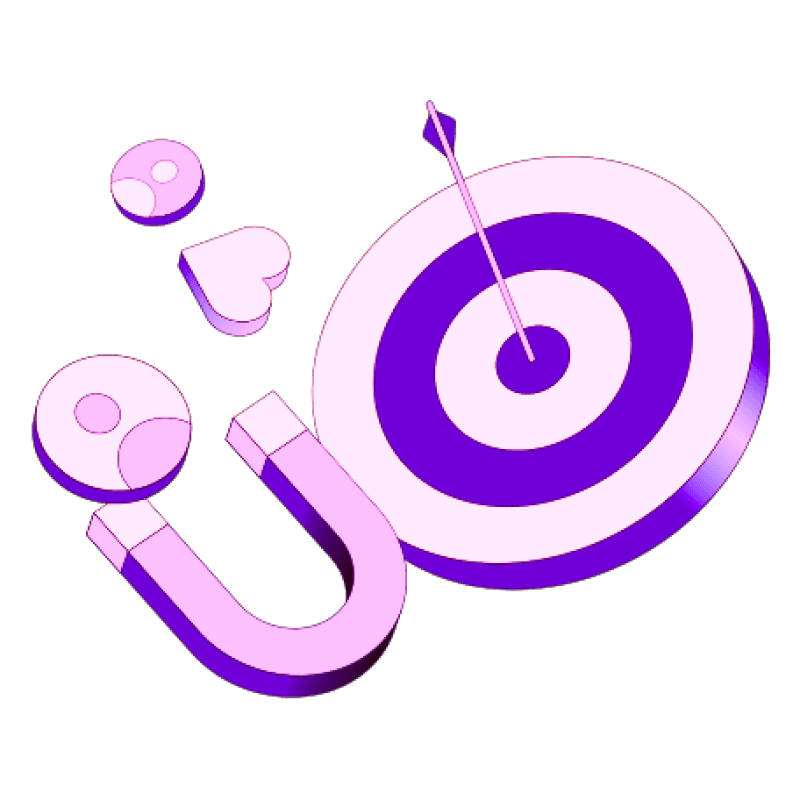Blogs
Articles

6 Key Metrics to Track While Competing with RB2B for B2B Leads
In today’s fast-paced business landscape, reaching potential customers before your competitors do can feel like a race against time. If you’re in the B2B space, you may have noticed that companies like RB2B are storming ahead with their lead generation strategies. But don't worry; you can still get ahead by focusing on the right metrics.
This post will walk you through six key performance indicators (KPIs) that can help you track your progress effectively while keeping an eye on the competition.
Understanding Your Lead Generation Goals
Before we dive into the specific metrics, let’s take a moment to consider what you want to accomplish with your lead generation efforts. Are you looking to increase your overall lead volume, improve lead quality, or shorten your sales cycle? Having clear goals will guide your analysis and help you decide which metrics to focus on.
By aligning your metrics with your objectives, you can create a more tailored approach to outperforming rivals like RB2B. Now, let’s explore the first set of metrics that can give you a clearer picture of your lead generation effectiveness.
1. Conversion Rate
The conversion rate is a crucial metric that tells you how many of your leads are turning into actual customers. This number gives you insight into the effectiveness of your sales and marketing strategies.
To calculate your conversion rate, simply divide the number of conversions (new customers) by the total number of leads and multiply by 100 to get a percentage. For example, if you generated 100 leads and converted 10 into customers, your conversion rate would be 10%.
A low conversion rate might signal that you need to optimize your sales funnel or rethink your messaging. In contrast, a high conversion rate typically means you're doing something right—maybe it’s your targeting or your follow-up strategy. The key is to track this metric consistently over time to spot trends that can inform your strategy.
2. Cost Per Lead (CPL)
Next up is the Cost Per Lead (CPL). Understanding how much you’re spending to generate leads can help streamline your budget and make smarter financial decisions. To calculate CPL, divide your total marketing expenses by the number of new leads generated within a specific time frame.
For instance, if you spent $1,000 on a marketing campaign and garnered 50 leads, your CPL would be $20. A lower CPL means you’re investing wisely, while a high CPL could indicate it’s time to reassess your campaigns or channels.
Being mindful of your CPL not only helps in financial planning but also in determining which channels are generating the best leads at the lowest cost, allowing you to focus your resources more efficiently.
3. Lead Quality Score
Not all leads are created equal. Evaluating lead quality, often done using a scoring system, can help you zero in on those that are more likely to convert. This score can be based on various factors, including demographics, company size, industry, engagement level, and fit with your service or product.
Creating a lead quality scoring system might require a bit of upfront work, but it’s worth it. Higher-quality leads will likely have a better conversion rate and lower CPL, ultimately making your efforts more effective.
And remember—you don’t have to do this alone! Tools like Persana.ai can assist in enriching your data and finding the right contact information, allowing you to develop a robust quality scoring system that saves you time and elevates your lead generation process.
4. Lead Source Performance
Knowing where your leads are coming from is vital for optimising your marketing efforts. Are they finding you organically through search engines, through paid ads, or maybe via social media? By breaking down your leads by source, you can see which channels are most effective and allocate your marketing budget more strategically.
Regularly tracking the performance of each source will also highlight any emerging trends over time. If you notice a specific channel declining in performance, it's an indication to either tweak your strategy or shift focus to the channels that are yielding better results.
5. Time to Conversion
How fast are you turning leads into customers? The Time to Conversion metric tells you how long it takes for a lead to move through your funnel and make a purchase. A long time to conversion could indicate potential issues in your sales process or even problems with your product fit.
To start tracking this, simply average the number of days it takes from the first interaction with a lead to their purchase. Ideally, you want this number to decrease over time as you refine your strategy and improve communication with leads.
Using an AI-powered sales prospecting tool can streamline your processes, helping reduce the time it takes to close deals. Persana.ai, for instance, can integrate with your existing outbound tools, automating manual tasks and giving your sales team more time to focus on engaging with leads directly.
6. Customer Lifetime Value (CLV)
Finally, let’s talk about Customer Lifetime Value (CLV). This metric estimates how much revenue you can expect from a customer over the entire time you do business with them. Knowing your CLV helps guide your acquisition strategies and overall business strategy.
A higher CLV indicates that you can afford to pay a bit more for leads, which can be especially beneficial when competing with industry leaders like RB2B. To calculate CLV, consider your average purchase value, the purchase frequency, and the average customer lifespan.
When you focus on improving your CLV, you cultivate a deeper relationship with your customers, paving the way for upselling, cross-selling, and repeat business.
Conclusion: Get Started Today
When competing with major players like RB2B, tracking these key metrics can give you the edge you need to stand out. Remember, it's not just about generating leads; it's about generating quality leads effectively.
If you're curious about how you can leverage technology to enhance your lead generation efforts, consider exploring Persana.ai. Our AI-powered tool not only helps you generate lead lists and enrich your data but also integrates seamlessly with your existing tools to streamline your processes. With the right metrics and the right tools, you’ll be well-equipped to attract and convert leads while leaving the competition in the dust.
By applying these insights and focusing on these vital metrics, you can sharpen your strategy and improve your lead generation process. Here’s to your success in the world of B2B leads!

Create Your Free Persana Account Today
Join 5000+ GTM leaders who are using Persana for their outbound needs.
How Persana increases your sales results
One of the most effective ways to ensure sales cycle consistency is by using AI-driven automation. A solution like Persana, and its AI SDR - Nia, helps you streamline significant parts of your sales process, including prospecting, outreach personalization, and follow-up.



